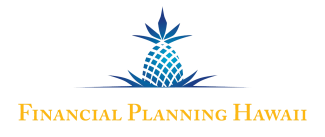
How to Invest in Bonds and CDs Now That Interest Rates Have Risen
How to Invest in Bonds and CDs Now That Interest Rates Have Risen
John H. Robinson, December 8, 2022
The past decade or so has been a wonderful time to borrow money. Historic low-interest rates made it possible for consumers to refinance debt including home mortgages and to obtain mortgages with monthly payments that are mostly principal. The flip side of the accommodating borrowing environment is that it has been a challenging time to invest for income. Just one year ago, 10-year treasuries were paying less than 1% and the highest yielding 12-month certificates of deposit were paying just .2%! As I said at that time, with rates at those levels bonds (including CDs) were no longer a viable asset class. It is why I was urging clients to hold the portion of their portfolios that would normally be invested in bonds in cash instead.
Oh what a difference a year makes!
Today, the highest yielding 12-month brokered FDIC-insured CDs are paying around 4.8%. This has been the most dramatic single-year increase in interest rates since the 1970s. My advice in our client newsletter and in the FPH Blog has been to get your cashback to work. We have been reaching out to clients individually since March or April to help them start earning interest again by buying 6-month and/or 12-month CDs or treasuries.
Time to Start Laddering Maturities?
As inflation fears became realized and interest rates started to rise, our advice to clients was to have no fear of locking in 12-month rates, even in a rapidly rising rate environment, because it was unlikely that rates would rise sharply and then fall just as quickly. The opportunity cost of locking in a 12-month rate too soon did not seem high. At that time, I thought that 12-month yields might rise as high as 3-3.5%, which would roughly match the rate rise we saw from 2017 to the end of 2018. However, I also advised that if rates happened to go higher than 3-4%, I would be inclined to begin recommending that investors start extending maturities beyond 12 months (i.e., laddering).
For investors with cash to invest for income today, we are recommending extending maturities out to two years with maturities staggered in 6-month increments. 6-month CDs are currently yielding around 4.4% while the highest 2-year rates I have seen are in the 4.8-5.0% range. A couple of weeks ago, the 3- to 5-year rates were also in the 4.85-5.0% range, but these yields fell sharply last week and are now in the 4.3-4.5% range. With this inverted yield curve, I am fine with sticking with the 2-year ladder approach. If the 3- to 5-year yields approach 5% again, I will recommend extending our ladders out that far.
If rates continue to rise in 2023, 6-7% yields would lead me to recommend extending bond ladders out as long as 6-7 years. As a simple guideline, for intermediate-term CD/bond yields of 5% or higher, I recommend extending the maximum length of the ladder to match the yield on the CD. For example, if a 7-year treasury is paying 7% interest, I will be fine extending the ladder term to 7 years.
What Types of Bonds to Buy
As you can see, I have a predilection toward certificates of deposit and treasuries. I am not entirely averse to including investment grade corporate bonds in the ladder too, as long as the yield advantage is significant. I have recently seen a few new issue corporate offerings in the 5.5%-6.0% range for 5 years, but they have all had call features that allow the issuer to redeem them if interest rates drop back down. With call protection, I could be tempted to include these offerings too, though investors would do well to remember that the 2008-2009 financial crisis caused a few highly rated financial institutions to see their stellar “A” ratings fall to junk bond status almost overnight. There is a very real difference in credit risk between corporate bonds and CDs/treasuries.
The same holds true for tax-exempt municipal bonds. I have been scouring the muni marketplace regularly and have not found many compelling offerings with yields that are significantly higher than the after-tax yields on CDs and/or treasuries. Regulatory complexity and the liability burden the regulations place on financial planners have also caused me to eschew municipal bonds over the past decade.
In terms of CDs vs. treasuries, treasuries securities have the advantage of paying interest that is exempt from state taxes (not relevant in states with no income tax or in retirement accounts), but they are also more complicated in terms of pricing and federal income tax reporting. CDs tend to pay slightly higher yields and new issue brokered CDs issued at par ($1,000 per CD) are easy for consumers to understand. I use treasuries and CDs interchangeably depending on client circumstances.
Please feel free to reach out to us for current yield information. It is a real treat to finally be able to help clients earn interest on their hard-earned money again!
John H. Robinson is the owner/founder of Financial Planning Hawaii, Fee-Only Planning Hawaii, and Paraplanning Hawaii. He is also a co-founder of fintech software-maker Nest Egg Guru.
DISCLOSURES
Securities offered through J.W. Cole Financial, Inc. (JWC) member FINRA/SIPC. Advisory services offered through Financial Planning Hawaii and J.W. Cole Advisors, Inc. (JWCA). Financial Planning Hawaii and JWC/JWCA are unaffiliated entities
Fee-only financial planning services are provided through Financial Planning Hawaii, Inc. DBA Fee-Only Planning Hawaii, a separate state of Hawaii Registered Investment Advisory firm. Financial Planning Hawaii does not take custody of client assets nor do its advisers take discretionary authority over client accounts.
The information contained herein is general in nature. Neither Financial Planning Hawaii nor J.W. Cole provides client-specific tax or legal advice. All readers should consult with their tax and/or legal advisors for such guidance in advance of making investment or financial planning decisions with tax or legal implications

